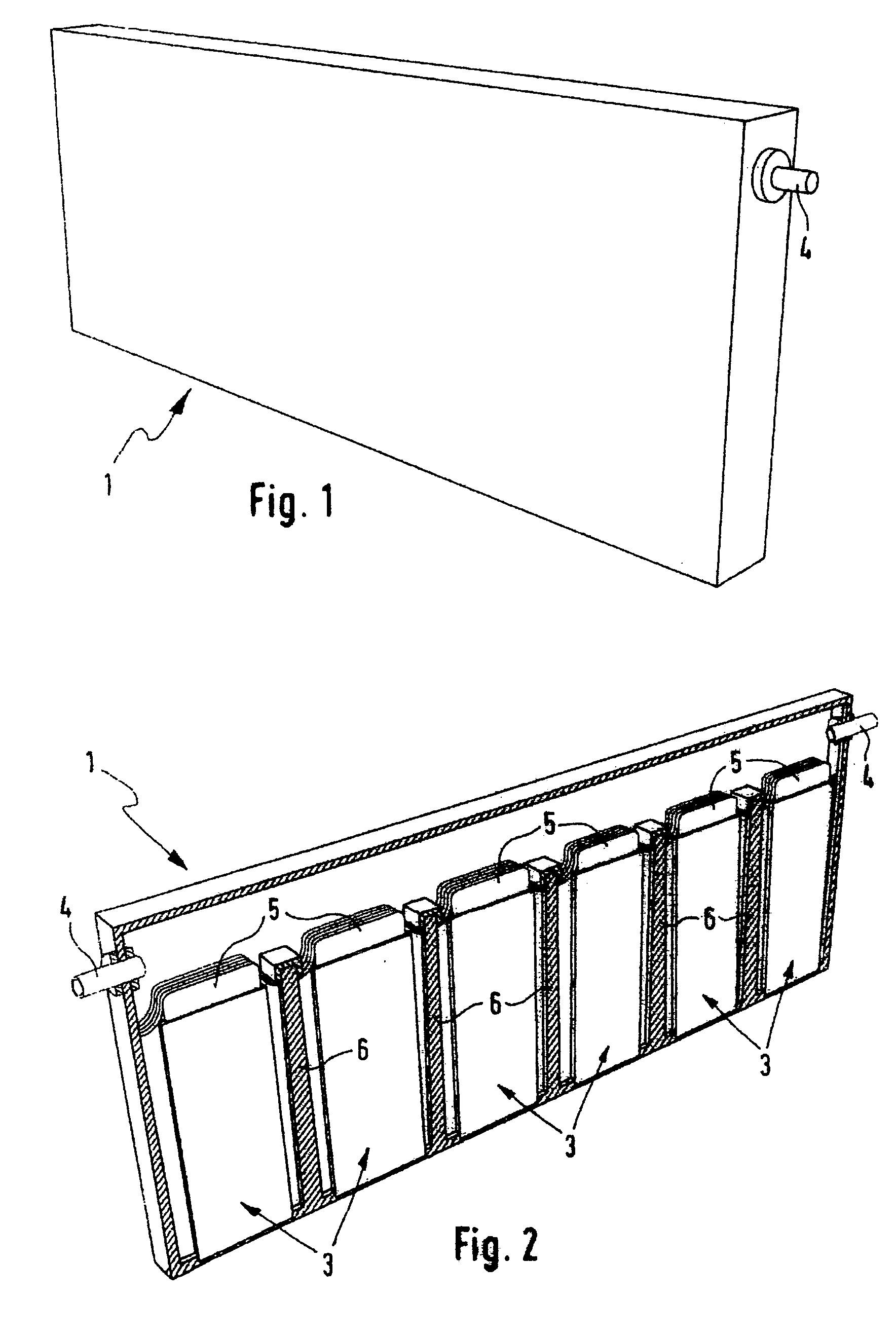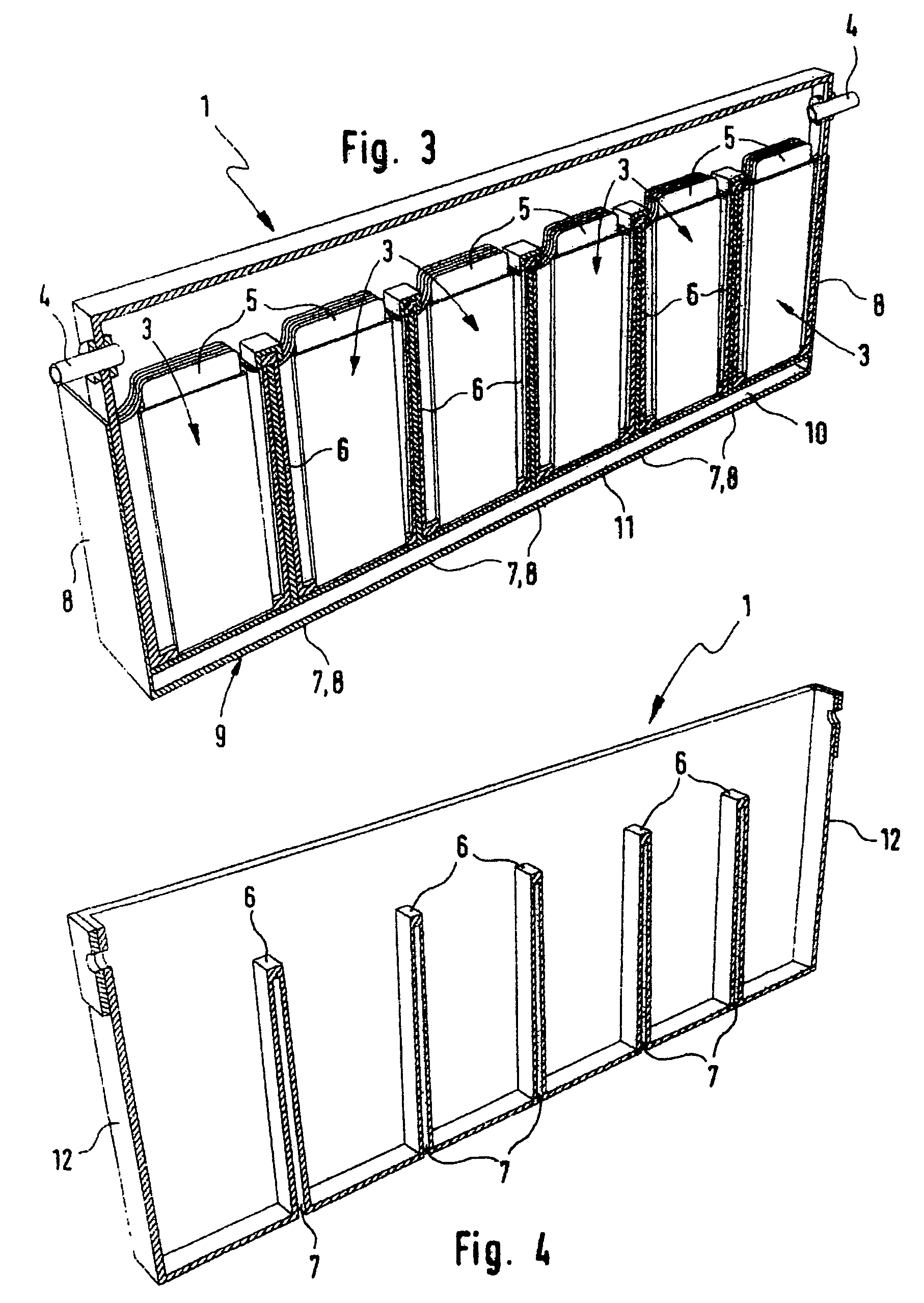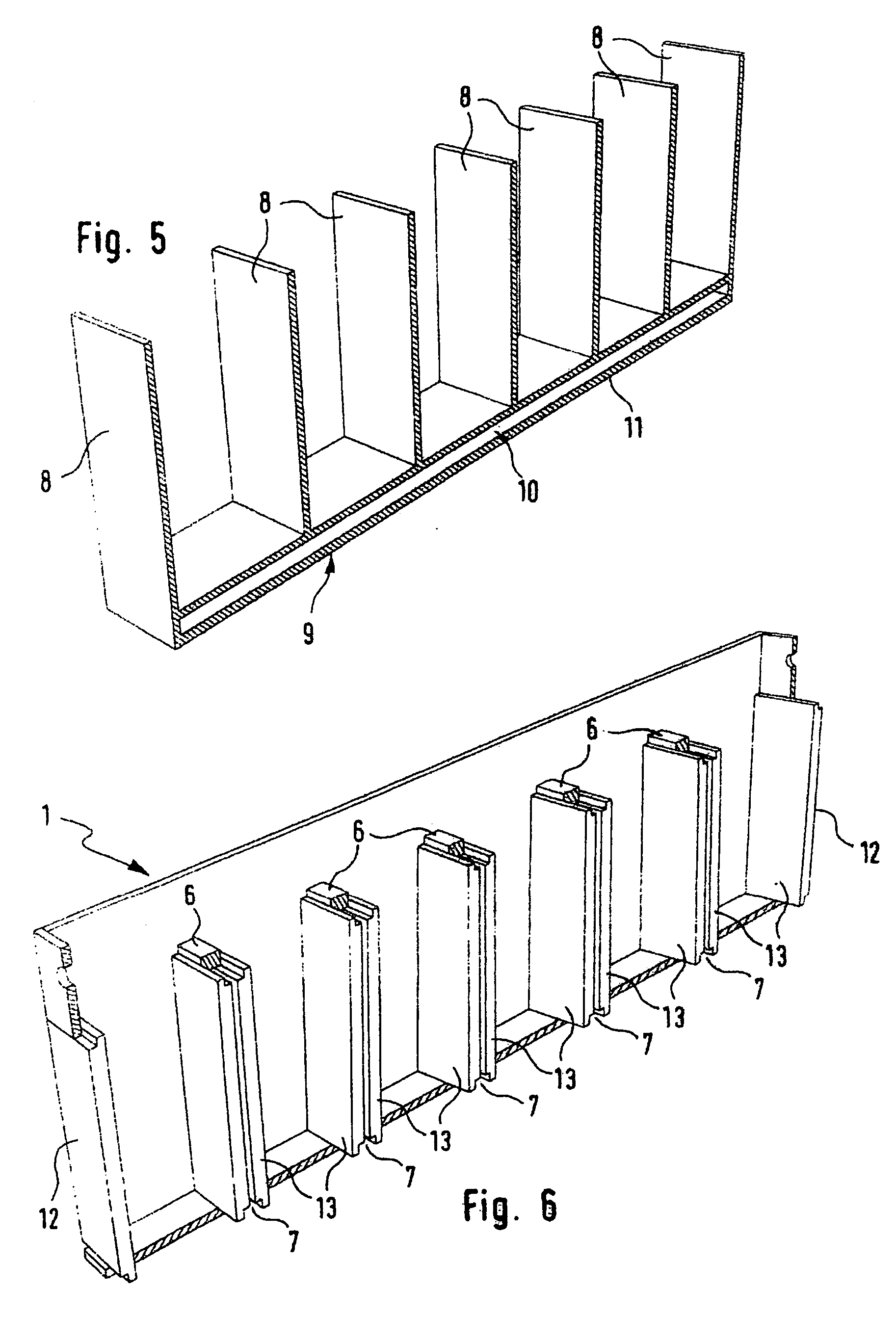Prismatic battery made of multiple individual cells
a technology of individual cells and batteries, applied in the manufacture of secondary cells, cell components, cell component details, etc., can solve the problems of uneven cell voltage, large limitation of battery use, and substantially faster aging of the warmer cells in the center of the modul
- Summary
- Abstract
- Description
- Claims
- Application Information
AI Technical Summary
Benefits of technology
Problems solved by technology
Method used
Image
Examples
Embodiment Construction
[0030]FIG. 1 shows a single module 1 of a battery 2, which is illustrated in its entirety later on. This module 1 is typically made up of multiple individual electrochemical cells 3, which are situated inside module 1 and are not visible in the representation selected here. Module 1 also includes two electric connections 4, one of which is illustrated here.
[0031]FIG. 2 shows a sectional view of a module 1 of this type in an embodiment according to the related art. In addition to the two electric connections 4, this illustration also shows individual electrochemical cells 3 inside module 1. Individual electrochemical cells 3 each include alternating vertically stacked electrodes which are typically designed as metal plates or metal films, and an active ground and electrolyte positioned therebetween. A number of these films serving as electrodes are shown schematically in FIG. 2 and are identified by reference numeral 5.
[0032] Module 1 illustrated here has 6 electrochemical cells 3 ...
PUM
 Login to View More
Login to View More Abstract
Description
Claims
Application Information
 Login to View More
Login to View More - R&D
- Intellectual Property
- Life Sciences
- Materials
- Tech Scout
- Unparalleled Data Quality
- Higher Quality Content
- 60% Fewer Hallucinations
Browse by: Latest US Patents, China's latest patents, Technical Efficacy Thesaurus, Application Domain, Technology Topic, Popular Technical Reports.
© 2025 PatSnap. All rights reserved.Legal|Privacy policy|Modern Slavery Act Transparency Statement|Sitemap|About US| Contact US: help@patsnap.com



